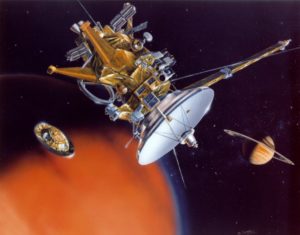 There is a fascinating article on the Christian Science Monitor Website about the Cassini spacecraft and what it has shown scientists about Saturn. Cassini was launched in 1997 and is near the end of its highly successful mission. The unmanned craft has been orbiting Saturn since 2004.
There is a fascinating article on the Christian Science Monitor Website about the Cassini spacecraft and what it has shown scientists about Saturn. Cassini was launched in 1997 and is near the end of its highly successful mission. The unmanned craft has been orbiting Saturn since 2004.
When Cassini first reached Saturn after traveling roughly a billion miles to get there, scientists back on Earth had to slow its speed by firing its engines. It was a tricky operation because reducing speed too much would burn up Cassini’s costly fuel and shorten the mission, and not reducing speed enough would send it hurtling past Saturn to be lost forever in space. Fortunately, the procedure worked, and Cassini soon began sending back valuable data. The spacecraft, which is the size of a school bus and runs on nuclear fuel, is scheduled to burn up in deep in Saturn’s atmosphere late this September.
Although Cassini was launched from Florida, the mission is a joint project between the United States and 16 other countries. In the year or so before its launch, there was concern that budget cuts to NASA might derail the mission, but the necessary money came through. Once Cassini was orbiting Saturn, the information gathering was going so well that the decision was made to extend the mission for nine additional years.
While other unmanned space crafts have passed by Saturn, Cassini orbited the planet for years gathering information. Furthermore, a separate landing craft was able to touch down on Titan, one of the moons of Saturn, and transmit information about its soil to the mother ship.
In conclusion, as a result of the Cassini mission, scientists have learned much about Saturn, its famous rings and the moons in its orbit. Notably, Cassini helped scientists understand that Titan has many chemical similarities to earth and that Saturn’s famous rings are only 30 miles thick.











